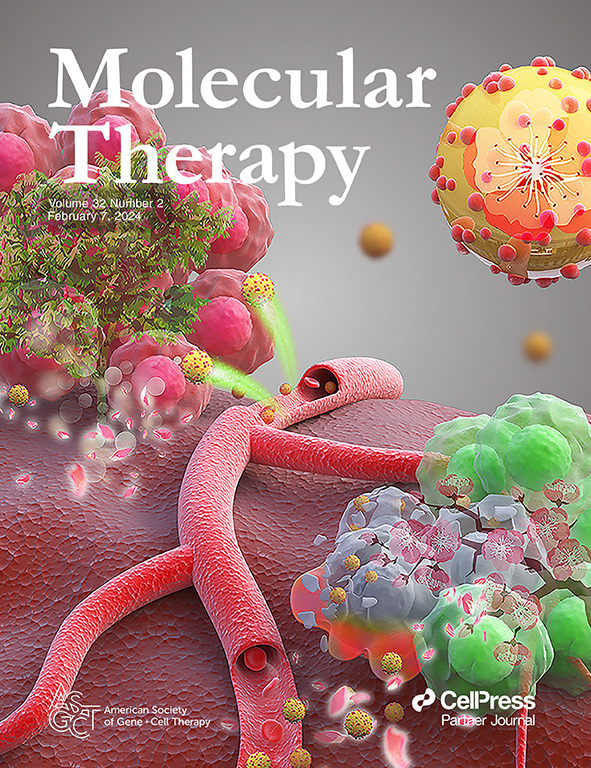在SYNGAP1相关疾病的小鼠模型中,AAV递送全长SYNGAP1可挽救癫痫和行为表型。
IF 12
1区 医学
Q1 BIOTECHNOLOGY & APPLIED MICROBIOLOGY
引用次数: 0
摘要
syngap1相关疾病(SRDs)是一种罕见的神经发育疾病,其特征是严重的神经症状,包括癫痫、运动障碍和认知功能障碍。目前的治疗选择是有限的,患者依赖于鸡尾酒药物来控制各种症状,但这并不能解决潜在的病理。SRDs主要由SYNGAP1基因的单倍不足引起,该基因编码突触支架和信号蛋白SynGAP。我们开发了一种基因补充策略,通过腺相关病毒(AAV)传递人类SYNGAP1的广泛神经元表达。在泛神经元SYNAPSIN I启动子的驱动下,SYNGAP1的传递减轻了SYNGAP1杂合小鼠模型中的几种疾病表型,包括癫痫样活性、多动和冒险行为。值得注意的是,在与人类典型诊断年龄相对应的幼年小鼠中给予AAV-SYNGAP1,挽救了行为缺陷,突出了其临床相关性。我们的研究结果首次证明了aav介导的基因治疗可以恢复SYNGAP1功能并逆转关键表型,支持其作为SRD患者变革性治疗的潜力。本文章由计算机程序翻译,如有差异,请以英文原文为准。
AAV delivery of full length SYNGAP1 rescues epileptic and behavioral phenotypes in a mouse model of SYNGAP1-related disorders.
SYNGAP1-related disorders (SRDs) are rare neurodevelopmental conditions characterized by severe neurological symptoms including epilepsy, motor impairment, and cognitive dysfunction. Current treatment options are limited, with patients relying on a cocktail of medications to manage the diverse symptoms, but that do not address the underlying pathology. SRDs are primarily caused by haploinsufficiency of the SYNGAP1 gene, which encodes the synaptic scaffolding and signaling protein, SynGAP. We developed a gene supplementation strategy to deliver broad neuronal expression of human SYNGAP1 via an adeno-associated virus (AAV). Driven by the pan-neuronal SYNAPSIN I promoter, SYNGAP1 delivery alleviated several disease phenotypes in a Syngap1 heterozygous mouse model including epileptiform activity, hyperactivity, and risk-taking behaviors. Notably, AAV-SYNGAP1 administration in juvenile mice, which corresponds to the typical age of diagnosis in humans, rescued behavioral deficits, highlighting its clinical relevance. Our findings provide the first evidence that AAV-mediated gene therapy can restore SYNGAP1 function and reverse key phenotypes, supporting its potential as a transformative therapeutic for SRD patients.
求助全文
通过发布文献求助,成功后即可免费获取论文全文。
去求助
来源期刊

Molecular Therapy
医学-生物工程与应用微生物
CiteScore
19.20
自引率
3.20%
发文量
357
审稿时长
3 months
期刊介绍:
Molecular Therapy is the leading journal for research in gene transfer, vector development, stem cell manipulation, and therapeutic interventions. It covers a broad spectrum of topics including genetic and acquired disease correction, vaccine development, pre-clinical validation, safety/efficacy studies, and clinical trials. With a focus on advancing genetics, medicine, and biotechnology, Molecular Therapy publishes peer-reviewed research, reviews, and commentaries to showcase the latest advancements in the field. With an impressive impact factor of 12.4 in 2022, it continues to attract top-tier contributions.
 求助内容:
求助内容: 应助结果提醒方式:
应助结果提醒方式:


